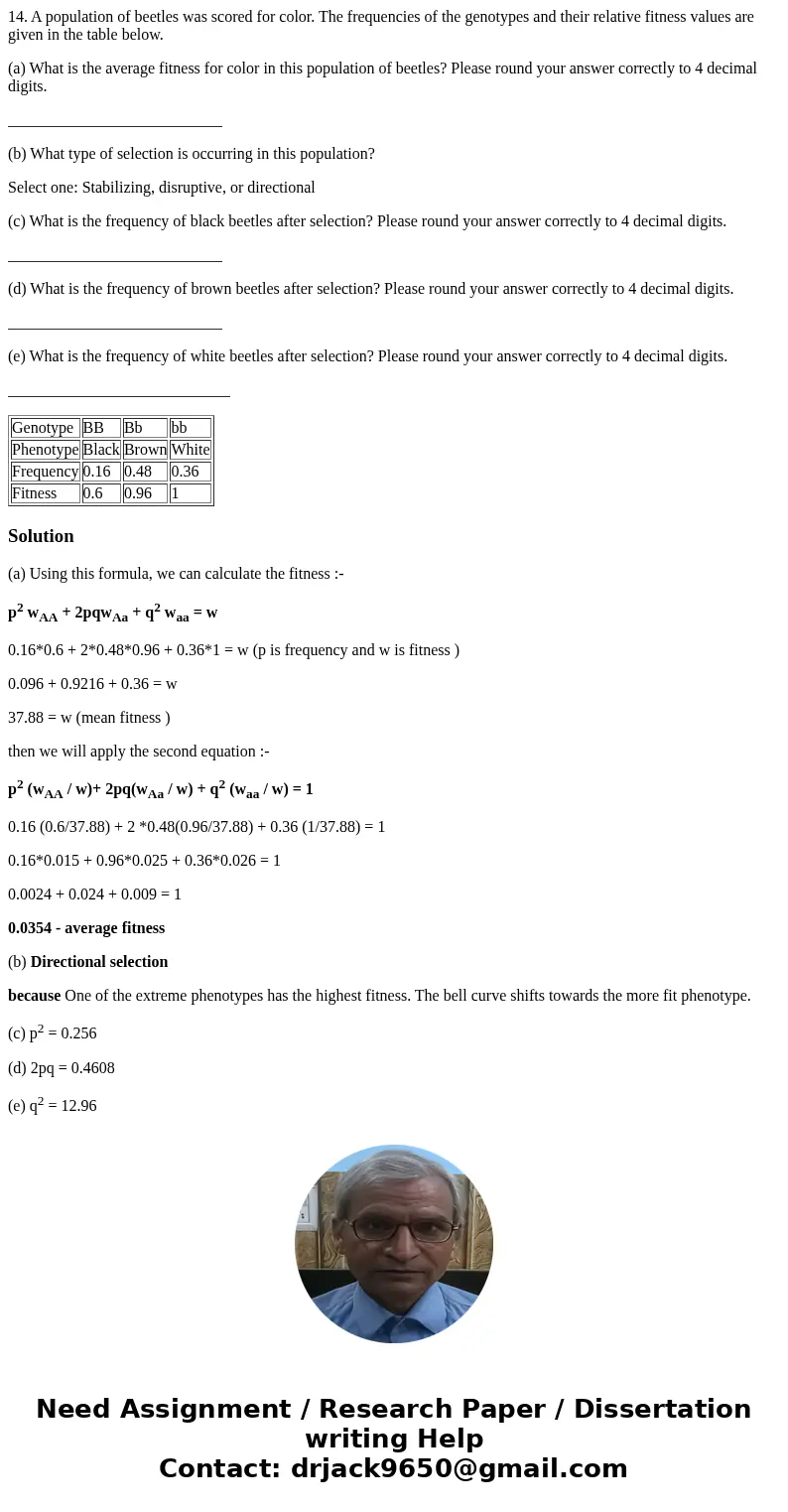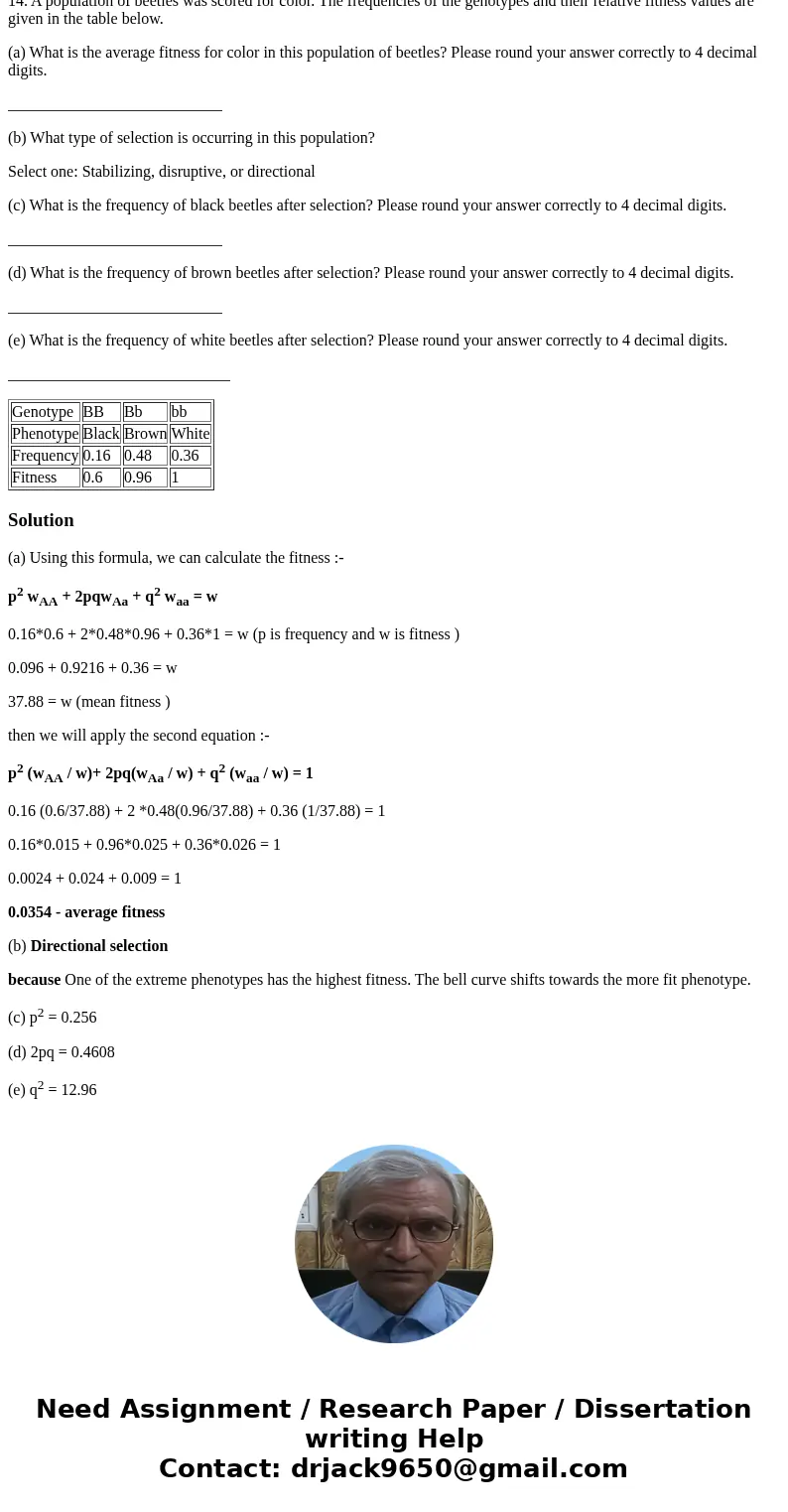14 A population of beetles was scored for color The frequenc
14. A population of beetles was scored for color. The frequencies of the genotypes and their relative fitness values are given in the table below.
(a) What is the average fitness for color in this population of beetles? Please round your answer correctly to 4 decimal digits.
___________________________
(b) What type of selection is occurring in this population?
Select one: Stabilizing, disruptive, or directional
(c) What is the frequency of black beetles after selection? Please round your answer correctly to 4 decimal digits.
___________________________
(d) What is the frequency of brown beetles after selection? Please round your answer correctly to 4 decimal digits.
___________________________
(e) What is the frequency of white beetles after selection? Please round your answer correctly to 4 decimal digits.
____________________________
| Genotype | BB | Bb | bb |
| Phenotype | Black | Brown | White |
| Frequency | 0.16 | 0.48 | 0.36 |
| Fitness | 0.6 | 0.96 | 1 |
Solution
(a) Using this formula, we can calculate the fitness :-
p2 wAA + 2pqwAa + q2 waa = w
0.16*0.6 + 2*0.48*0.96 + 0.36*1 = w (p is frequency and w is fitness )
0.096 + 0.9216 + 0.36 = w
37.88 = w (mean fitness )
then we will apply the second equation :-
p2 (wAA / w)+ 2pq(wAa / w) + q2 (waa / w) = 1
0.16 (0.6/37.88) + 2 *0.48(0.96/37.88) + 0.36 (1/37.88) = 1
0.16*0.015 + 0.96*0.025 + 0.36*0.026 = 1
0.0024 + 0.024 + 0.009 = 1
0.0354 - average fitness
(b) Directional selection
because One of the extreme phenotypes has the highest fitness. The bell curve shifts towards the more fit phenotype.
(c) p2 = 0.256
(d) 2pq = 0.4608
(e) q2 = 12.96


 Homework Sourse
Homework Sourse